What's New
Displaying results 1061 - 1070 of 4913
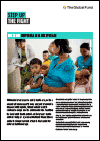
Resource | Publications,
Without universal access to quality health care, millions of people die unnecessarily every year, and preventable diseases including AIDS, tuberculosis and malaria continue to ravage families and communities. To achieve the Sustainable Development Goal 3 of greater health and well-being for all, we must both end the epidemics and build stronger systems for health that can deliver universal health coverage.

Resource | Publications,
This review examined the human rights-related barriers to health services of key and vulnerable populations in the HIV and TB epidemics in Indonesia.
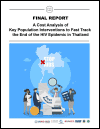
Resource | Publications,
Thailand is globally renowned for its achievements in reducing the spread of HIV. Despite these gains, epidemiologic and surveillance data point to the country’s outstanding gaps in HIV prevention, care, and treatment, especially for members of key populations (KP). HIV incidence and prevalence remain high among men who have sex with men (MSM), female sex workers (FSW), and people who inject drugs (PWID). The need to reach these populations comes at a time of growing demand for services, but limited available funding. While the government has steadily increased domestic expenditures for HIV services, a significant proportion for programs addressing key populations comes from international donors.
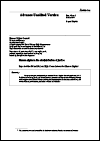
Resource | Publications,
The present report is submitted pursuant to Human Rights Council resolution 36/16. It addresses violence, death and serious injury in situations of deprivation of liberty, drawing on the experience of United Nations and regional human rights mechanisms, and seeking the views of States, civil society, and other relevant stakeholders.
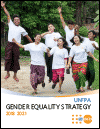
Resource | Publications,
This Strategy focuses on empowering women and adolescent girls and reaffirms UNFPA’s commitments to supporting the realization of international commitments and resolutions. It also complements the implementation of the UNFPA 2018–2021 Strategic Plan.

Resource | Publications,
Many children remain effectively uncounted given the limited coverage of SDG data, but this situation is improving. Between 2018 and 2019, the likelihood of a country having no or insufficient data to assess its trajectory towards a child SDG target has fallen from 62 to 56 per cent. On average, 75 per cent of child-related SDG indicators in every country either have insufficient data or show insufficient progress to meet global SDG targets by 2030. The report calls for a step change now, both in assessing the situation of children everywhere and using data to target our efforts to reach those at greatest risk of being left behind.

Resource | Publications,
As a record of the first year of the UNICEF Strategic Plan, 2018–2021, the report outlines efforts to protect the rights of every child, to open up new opportunities for children and young people, to become increasingly effective and efficient, and to strengthen UNICEF’s partnerships and financial stewardship.
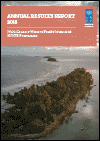
Resource | Publications,
This was the first year of the new funding cycle for the Multi-Country Western Pacific Integrated HIV/tuberculosis (TB) Programme. The three-year (2018-2020) US$11,368,713 programme is supported by the Global Fund and aims to strengthen control of HIV and TB in 11 Pacific island countries: Cook Islands, Federated States of Micronesia, Kiribati, Nauru, Niue, Palau, Republic of Marshall Islands, Samoa, Tonga, Tuvalu and Vanuatu. The United Nations Development Programme is the programme’s Principal Recipient.

Resource | Publications,
This document summarizes the proceedings of the Regional HIV Forum for the Pacific Island Countries and Territories 2018. The forum was the first event of its kind in the Western Pacific, bringing together people living with HIV and health care workers from across the region to meet, discuss and share their experiences working with and living with HIV. It provided a platform for open dialogue for both groups, enhancing HIV and antiretroviral therapy literacy, and self-empowerment, while aiming to catalyse coordination across HIV care, treatment and prevention programmes in the Pacific islands.

Resource | Publications,
Countries in Asia have typically addressed illicit drug supply and use with harsh punishments, including compulsory treatment and the death penalty. The region has long espoused the goal of creating a drug-free society, a goal that has been abandoned in other parts of the globe for being infeasible.
Like many other places in the world, there are emerging discussions in Asia about policies to reduce drug use and trafficking. This report aims to help inform policymakers and the public by describing the illicit drug situation for selected Association of Southeast Asian Nations + 3 countries (China, Japan, and South Korea).





